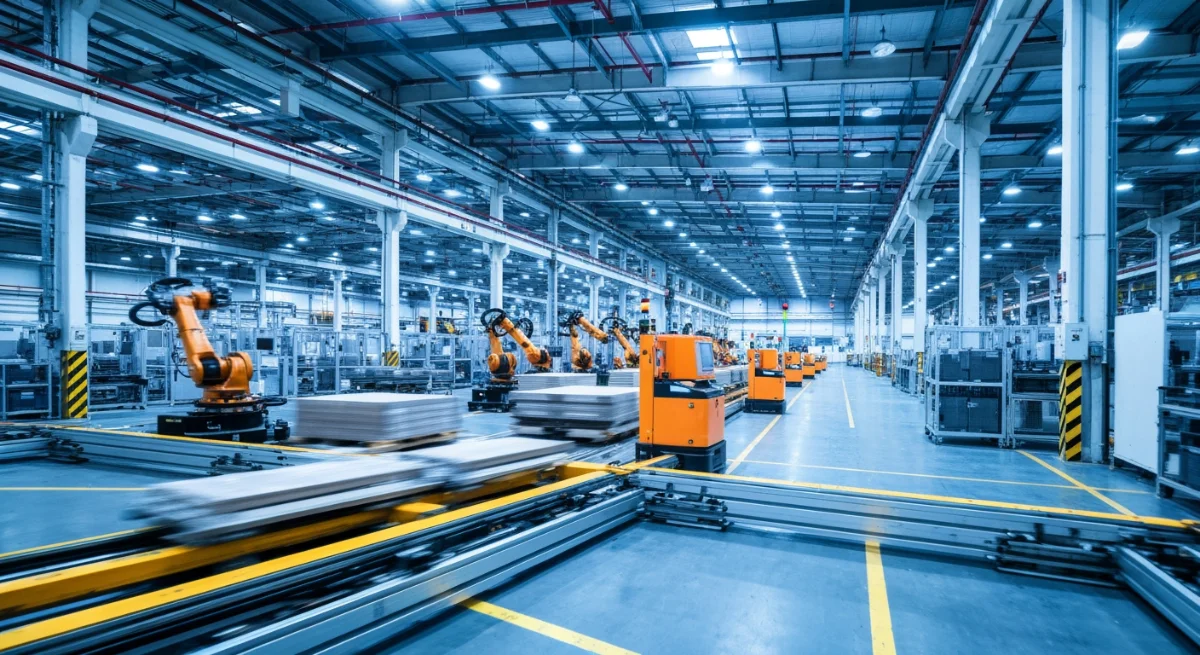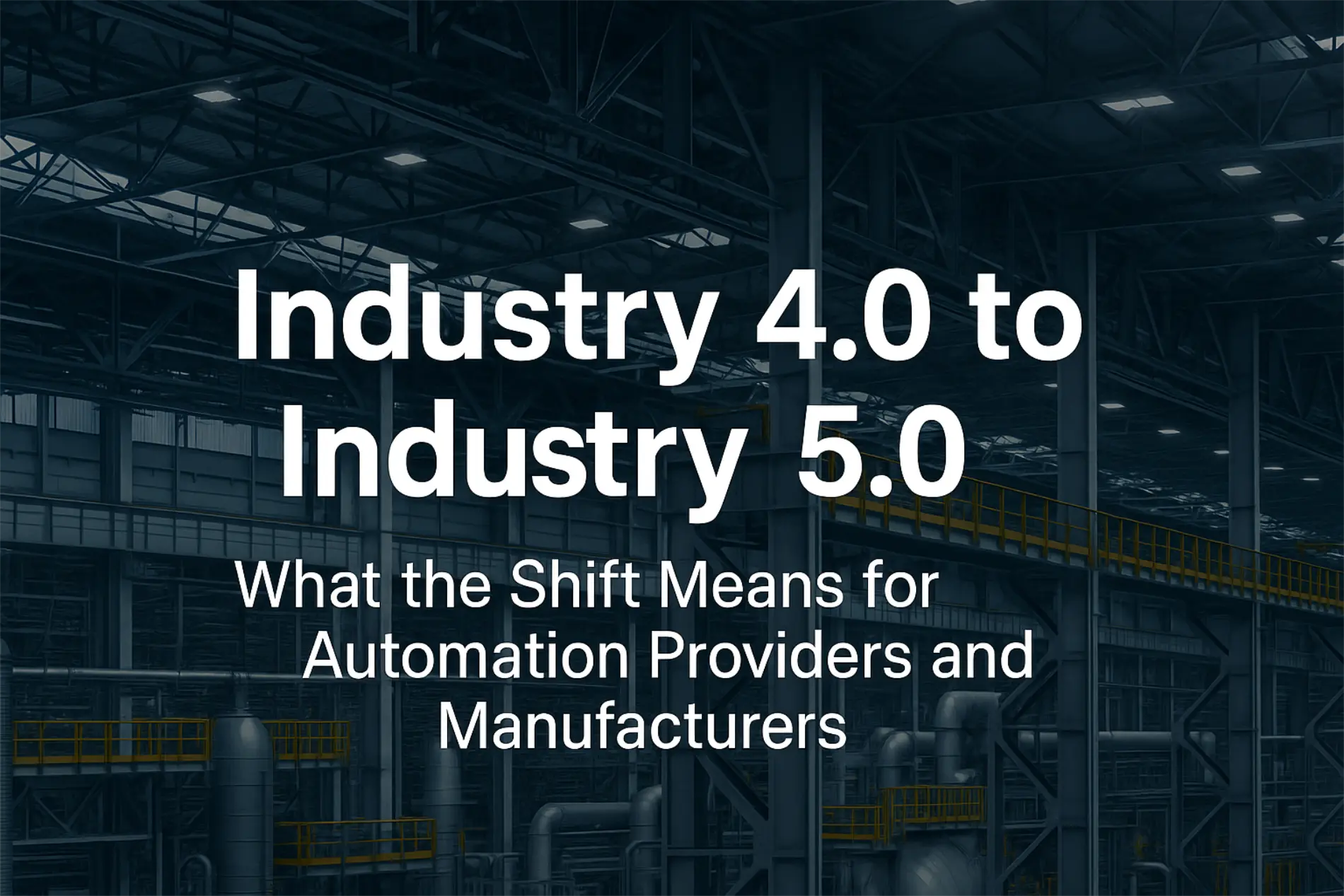The alarm sounds at 2:47 AM. Another critical piece of equipment has failed unexpectedly, bringing your entire production line to a grinding halt. As a maintenance manager, you know this scenario all too well – the scramble to diagnose the problem, source emergency parts, coordinate repair crews, and explain to management why today’s production targets won’t be met.
Unplanned downtime is the silent killer of manufacturing profitability. According to recent industry studies, manufacturers lose an average of $50,000 per hour during unplanned outages, with some industries facing costs exceeding $500,000 per hour. In fact, the cost of downtime in manufacturing is approximately $260,000 per hour, with manufacturers experiencing approximately 800 hours of downtime every year. The automotive sector faces even higher costs, with the cost of an hour’s downtime in an automotive plant up more than 50% from $1.3 million in 2019–20 to more than $2 million. Beyond the immediate financial impact, unexpected failures create ripple effects throughout the supply chain, damage customer relationships, and strain maintenance teams who find themselves constantly fighting fires instead of preventing them.
The good news? Modern predictive automation technologies are transforming how forward-thinking manufacturers approach maintenance, shifting from reactive firefighting to proactive equipment health management.
The Hidden Cost of Reactive Maintenance
Traditional maintenance strategies fall into two categories: reactive (fix it when it breaks) and preventive (maintain it on a schedule). While preventive maintenance represents an improvement over purely reactive approaches, it often leads to unnecessary interventions on healthy equipment while still missing the early warning signs of impending failures.
The financial impact extends far beyond the immediate repair costs. Consider these often-overlooked expenses:
Lost Production Revenue: The most obvious cost, but often underestimated when accounting for downstream effects on the entire production schedule.
Emergency Labor and Parts: Rush orders for critical components can cost 3-5 times more than planned purchases. Overtime labor rates compound these expenses. Emergency repairs typically cost 3-5 times more than planned maintenance due to overtime labor, expedited parts shipping, and production losses.
Quality Impact: Equipment running outside optimal parameters before failure often produces substandard products, leading to rework, scrap, and potential customer complaints.
Cascade Failures: When one piece of equipment fails unexpectedly, it often places additional stress on interconnected systems, potentially triggering secondary failures.
Regulatory Compliance: In regulated industries, unplanned downtime can result in missed compliance deadlines and potential fines.
Early Warning Systems: Your HMI as a Crystal Ball
Modern Human Machine Interface (HMI) systems have evolved far beyond simple start/stop controls. Today’s advanced HMI platforms serve as sophisticated diagnostic tools that can detect subtle changes in equipment behavior long before catastrophic failures occur.
Vibration Analysis Integration: Modern HMI systems can continuously monitor vibration patterns from critical rotating equipment. A gradual increase in vibration amplitude at specific frequencies often indicates bearing wear, misalignment, or imbalance – problems that can be addressed during planned maintenance windows rather than as emergency repairs.
Temperature Trending: Smart temperature monitoring goes beyond simple high-temperature alarms. Advanced HMI systems track temperature patterns over time, identifying gradual increases that might indicate deteriorating insulation, blocked cooling passages, or failing heat exchangers.
Energy Consumption Monitoring: Changes in motor current draw, power factor, or overall energy consumption can signal impending mechanical problems. An electric motor drawing slightly more current than normal might indicate increased friction, worn bearings, or misalignment.
Process Parameter Correlation: Modern HMI systems excel at identifying relationships between seemingly unrelated parameters. For example, a slight increase in hydraulic system pressure combined with a minor temperature rise might indicate seal degradation that could lead to complete system failure if left unchecked.
Predictive Analytics Integration: Advanced HMI platforms can integrate with machine learning algorithms that analyze historical data patterns to predict failure probabilities. These systems learn from past failures and continuously improve their predictive accuracy.
The key to effective early warning systems lies in establishing proper baselines and understanding normal equipment behavior. Your HMI should continuously collect and analyze data, not just during problems but during normal operation, to build a comprehensive picture of equipment health.
Documentation: The Unsung Hero of Predictive Maintenance
While many manufacturers focus on acquiring the latest sensors and analytics software, the most successful predictive maintenance programs share a common characteristic: exceptional documentation practices. This often-overlooked element can make the difference between a maintenance program that merely collects data and one that drives real operational improvements.
Equipment History Records: Every piece of equipment should have a comprehensive digital record including installation dates, maintenance history, part replacement records, and failure analysis reports. This historical context is crucial for predictive algorithms to identify patterns and establish accurate failure probability models.
Maintenance Procedures Documentation: Detailed, step-by-step maintenance procedures ensure consistency across different technicians and shifts. When procedures are properly documented and followed, it becomes easier to identify when equipment behavior deviates from expected norms.
Failure Analysis Reports: Too many organizations treat failures as isolated incidents rather than learning opportunities. Comprehensive failure analysis documentation should include root cause analysis, contributing factors, corrective actions taken, and preventive measures implemented. This information becomes invaluable for training predictive models and preventing similar failures.
Calibration and Testing Records: Predictive maintenance relies heavily on accurate sensor data. Maintaining detailed calibration records and testing protocols ensures that early warning systems remain reliable and trustworthy.
Knowledge Transfer Systems: Experienced maintenance professionals possess institutional knowledge that’s difficult to replace. Structured documentation systems capture this expertise, ensuring that predictive maintenance programs can survive personnel changes and continue improving over time.
Integration with CMMS Systems: Modern Computerized Maintenance Management Systems (CMMS) should integrate seamlessly with HMI platforms and predictive analytics tools. This integration ensures that maintenance recommendations generated by predictive algorithms are automatically converted into work orders with proper priority levels and resource allocation.
The documentation advantage extends beyond immediate maintenance benefits. During equipment audits, regulatory inspections, or warranty claims, comprehensive documentation demonstrates due diligence and can significantly impact outcomes. Moreover, when evaluating equipment replacement decisions, historical performance data provides objective criteria for comparing options.
Automated Preventive Maintenance Scheduling
Traditional preventive maintenance schedules often rely on calendar-based intervals or simple hour meters. While these approaches represent an improvement over purely reactive strategies, they fail to account for actual equipment condition and varying operating conditions.
Condition-Based Scheduling: Modern automation systems can trigger maintenance activities based on actual equipment condition rather than arbitrary time intervals. For example, a pump might be scheduled for bearing replacement when vibration levels reach predetermined thresholds, regardless of how many hours it has operated.
Dynamic Scheduling Optimization: Advanced scheduling algorithms consider multiple factors including equipment condition, production schedules, parts availability, and technician workload. These systems can automatically reschedule maintenance activities to minimize production impact while ensuring that critical maintenance windows aren’t missed.
Predictive Work Order Generation: When early warning systems detect developing problems, automated systems can generate preliminary work orders with recommended actions, required parts, and estimated completion times. This proactive approach allows maintenance teams to prepare for interventions before problems become critical.
Resource Optimization: Automated scheduling systems can optimize technician assignments based on skill sets, certifications, and current workload. This ensures that the right person with the right skills is assigned to each maintenance task, improving efficiency and reducing the likelihood of errors.
Supplier Integration: Advanced maintenance management systems can integrate with supplier systems to automatically trigger parts orders when predictive algorithms indicate that specific components will need replacement within defined timeframes. This integration reduces emergency purchasing costs and ensures parts availability when needed.
The key to successful automated scheduling lies in establishing clear maintenance priorities and decision criteria. Not all equipment failures have equal impact on production, and scheduling systems should reflect these priorities when recommending maintenance activities.
The Economics of Predictive Automation Investment
Many maintenance managers face skepticism when proposing investments in predictive automation technologies. However, the financial benefits of these systems often far exceed their implementation costs when properly planned and executed.
Reduced Emergency Maintenance Costs: Emergency repairs typically cost 3-5 times more than planned maintenance due to overtime labor, expedited parts shipping, and production losses. Predictive systems that prevent just a few emergency repairs per year can justify their entire implementation cost. Research by the U.S. Department of Energy shows that predictive maintenance can save up to 40% over reactive maintenance approaches.
Extended Equipment Life: Equipment operating within optimal parameters experiences less wear and stress, leading to longer service life and delayed capital replacement requirements. A 10-20% extension in equipment life can represent significant capital savings. McKinsey research indicates that predictive maintenance can increase machine life by 20-40%.
Improved Energy Efficiency: Equipment operating outside optimal parameters often consumes more energy. Predictive maintenance systems that keep equipment properly tuned can reduce energy consumption by 5-15%, providing ongoing operational savings. Well-maintained equipment typically operates at higher efficiency levels, contributing to sustainability goals.
Reduced Inventory Costs: Predictive maintenance allows for more accurate parts forecasting, reducing the need for extensive emergency spare parts inventories. This reduction in working capital requirements provides immediate financial benefits.
Labor Productivity Improvements: Maintenance technicians spend more time on value-added activities and less time on emergency repairs. This shift improves job satisfaction and allows organizations to accomplish more with existing staff.
Quality Improvements: Equipment operating within specification produces more consistent, higher-quality products. Reduced scrap and rework costs, along with improved customer satisfaction, contribute to the overall return on investment.
Insurance and Warranty Benefits: Many insurance providers offer reduced premiums for facilities with comprehensive predictive maintenance programs. Additionally, proper maintenance documentation can improve warranty claim success rates.
When calculating ROI for predictive automation investments, consider both direct cost savings and indirect benefits such as improved production flexibility, reduced stress on maintenance teams, and enhanced ability to meet customer commitments. Studies consistently show that every dollar invested in preventive or predictive maintenance saves up to five dollars on unforeseen expenses. Independent surveys on industrial average savings after implementing predictive maintenance programs showed that firms eliminated asset breakdown by 70-75%, boosted production by 20-25%, and reduced maintenance costs by 25-30%, with an average ROI of 10 times the initial investment.
Implementation Strategy: Building Your Predictive Maintenance Program
Successful predictive maintenance implementation requires a systematic approach that balances technical capabilities with organizational readiness.
Phase 1: Assessment and Planning Begin by conducting a comprehensive equipment criticality analysis. Not all equipment requires the same level of predictive monitoring. Focus initial efforts on equipment where failures would have the greatest impact on production, safety, or costs.
Phase 2: Infrastructure Development Upgrade HMI systems and install necessary sensors for critical equipment. Establish data collection protocols and ensure that information systems can handle the increased data volumes generated by predictive monitoring.
Phase 3: Documentation System Implementation Develop comprehensive documentation standards and train staff on proper record-keeping procedures. This foundation is essential for effective predictive analytics.
Phase 4: Pilot Program Select a limited number of critical equipment pieces for initial predictive maintenance implementation. This approach allows teams to learn and refine processes before full-scale deployment.
Phase 5: Analytics and Optimization Implement predictive analytics tools and begin developing equipment-specific failure prediction models. Continuously refine these models based on actual performance data.
Phase 6: Full-Scale Deployment Expand the program to additional equipment based on lessons learned during the pilot phase. Establish ongoing training programs to ensure sustained success.
Measuring Success: Key Performance Indicators
Effective predictive maintenance programs require consistent measurement and continuous improvement. Key performance indicators should include:
Mean Time Between Failures (MTBF): Track improvements in equipment reliability over time.
Planned vs. Unplanned Maintenance Ratio: Aim for 80% planned maintenance and 20% unplanned maintenance.
Maintenance Cost per Unit of Production: Monitor the relationship between maintenance spending and production output.
Equipment Availability: Measure the percentage of time equipment is available for production.
First-Time Fix Rate: Track the percentage of maintenance activities completed successfully on the first attempt.
Predictive Accuracy: Monitor the accuracy of failure predictions and continuously improve predictive models.
The Path Forward
Unplanned downtime will never be completely eliminated, but predictive automation technologies provide powerful tools for dramatically reducing its frequency and impact. Success requires more than just technology implementation – it demands a cultural shift toward proactive maintenance practices supported by comprehensive documentation and continuous improvement processes.
The manufacturers who will thrive in the coming decades are those who view maintenance not as a necessary evil but as a strategic advantage. By investing in predictive automation technologies today, maintenance managers can transform their operations from reactive firefighting to proactive equipment health management, delivering significant value to their organizations while creating more satisfying and sustainable work environments for their teams.
The question isn’t whether you can afford to invest in predictive automation – it’s whether you can afford not to. Every day of delayed implementation represents continued exposure to the hidden costs of unplanned downtime and missed opportunities for operational improvement.
Start with a clear assessment of your current maintenance practices, identify the most critical improvement opportunities, and develop a systematic implementation plan. The technology exists today to dramatically reduce unplanned downtime – the only question is when you’ll begin your transformation journey.
Sources and References
Key Industry Studies and Research:
- Siemens “The True Cost of Downtime 2024” – Global study showing Fortune 500 companies lose $1.4 trillion annually to unplanned downtime
- U.S. Department of Energy Predictive Maintenance Guidelines – Comprehensive analysis showing predictive maintenance saves 8-12% over preventive maintenance and up to 40% over reactive maintenance
- McKinsey & Company Manufacturing Research (2021) – Study demonstrating predictive maintenance can reduce machine downtime by 30-50% and increase machine life by 20-40%
- Aberdeen Research Manufacturing Downtime Study – Found that 82% of companies experienced unplanned downtime over three years, costing up to $260,000 per hour
- Deloitte Analytics Institute – Research showing predictive maintenance can lower maintenance costs by up to 25% and reduce downtime by 70%
- Independent Industrial Surveys – Studies showing firms implementing predictive maintenance eliminated asset breakdown by 70-75%, boosted production by 20-25%, and reduced maintenance costs by 25-30%
- Plant Engineering Annual Maintenance Survey – Industry-wide analysis showing 88% of manufacturing companies use preventive maintenance, with growing adoption of predictive technologies
- Brightly Software ROI Analysis – Research demonstrating every dollar invested in preventive or predictive maintenance saves up to five dollars on unforeseen expenses
Additional Industry Resources:
- Electric Power Research Institute (EPRI) – Advanced predictive maintenance safety and performance studies
- World Economic Forum – Digital transformation value analysis for electricity sector
- Advanced Technology Services (ATS) – Predictive maintenance cost savings analysis
For Further Reading:
- Plant Engineering Magazine – Annual maintenance surveys and industry trends
- Reliable Plant – Predictive maintenance best practices and case studies
- Industrial IoT World – Technology implementation guides and ROI analysis
- Smart Industry – Manufacturing digitalization and automation insights
Note: All statistics and research findings referenced in this article are based on peer-reviewed industry studies, government research, and established consulting firm analyses. Specific methodologies and detailed findings can be found in the original source materials.








